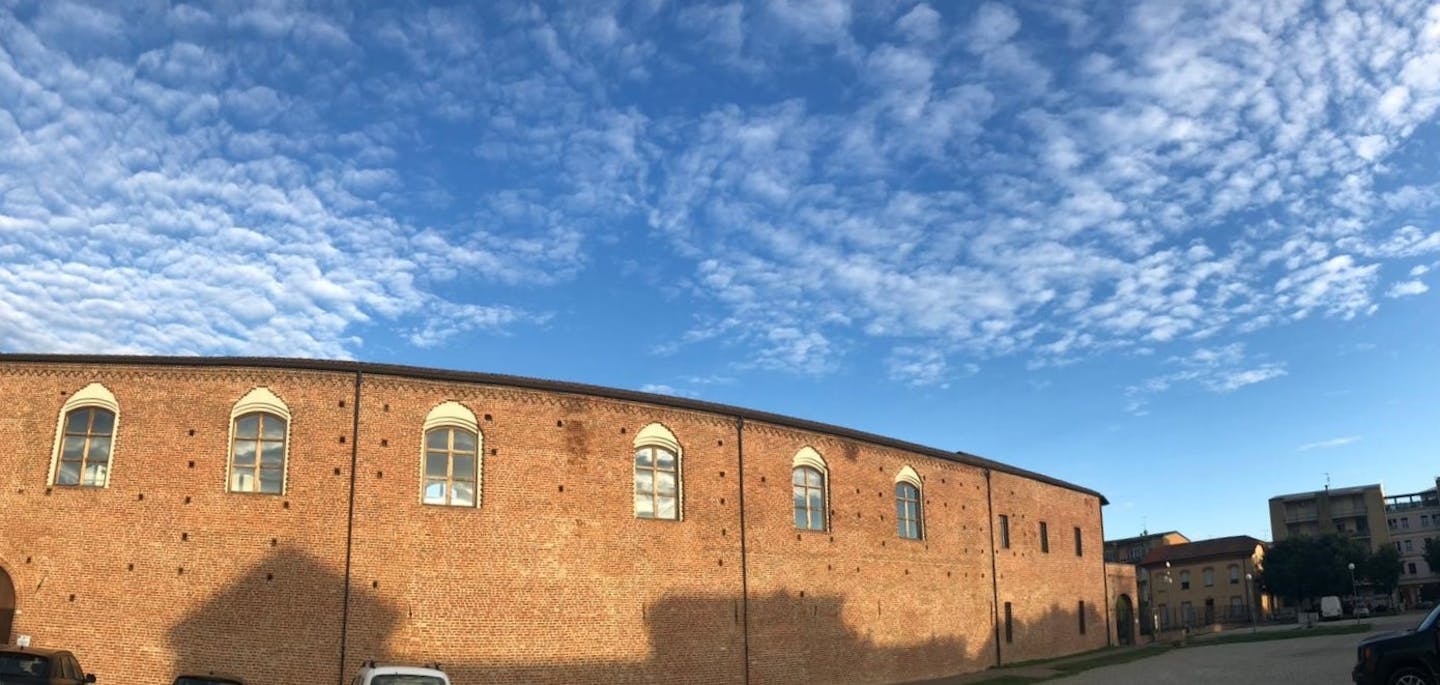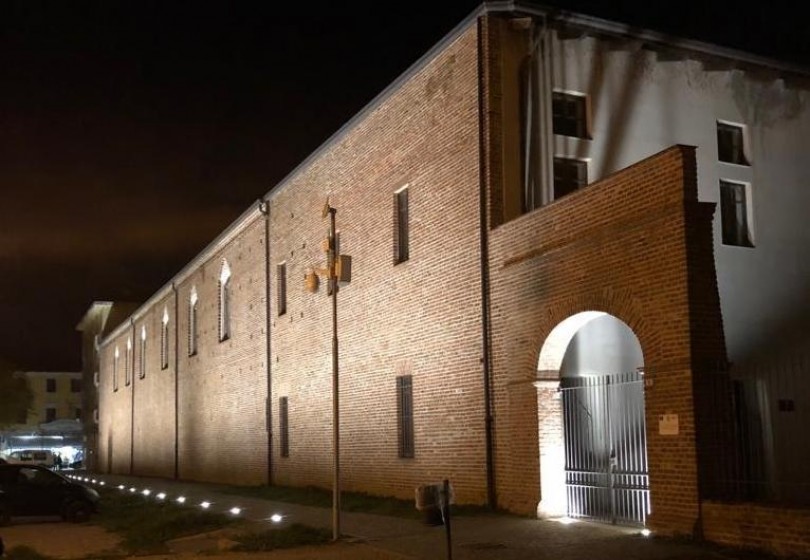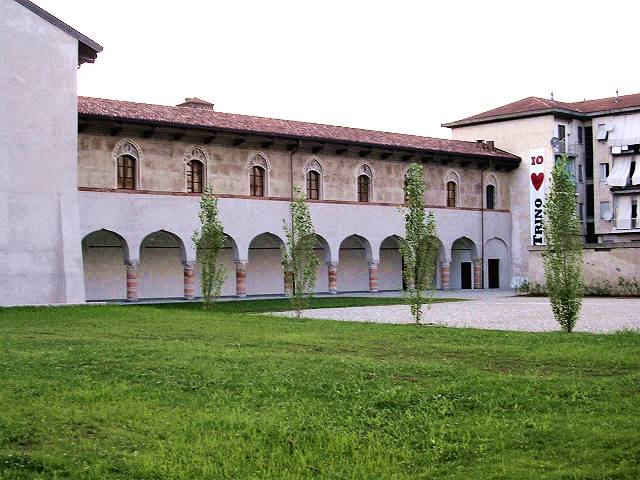


The existence of the prestigious Aleramica residence is documented as early as 1100. It was expanded in 1152 at the behest of William the Elder, who made it his permanent home. It became a military citadel in 1600, under the Gonzaga, and passed to the Savoy family around the end of the century.

In Federico Guazzo's (1623 - 1682) plan of Trino, dated 1666, the palace had a rectangular C-shaped porticoed courtyard, leaning against the surrounding walls. The northern wing was demolished in 1959.

Over the centuries, its halls, once rich in pictorial decoration, were used as warehouses, workshops, stables and military garrisons.

In 1686, after King Louis XIV revoked the Edict of Nantes, Duke Victor Amadeus II of Savoy prepared military expeditions to wipe out all traces of Protestant presence in the territory. About 700 Waldenses were imprisoned in the Palais Paleologus.

Of these only 46 survived, and Trino became infamously known as "the grave of the Waldensians." Restoration in 2006, returned the palace to the image of a Renaissance stately home.
Gian Andrea Irico Civic Museum
Located opposite Palazzo Paleologo, the Civic Museum, dedicated to local historian Gian Andrea Irico (1704 - 1782), was opened in 1978.

Conceived as an educational museum by Vittorio Viale of Trina, who welcomed it into his ancestral home, the museum consists of seven rooms each of which houses ancient artifacts, works and original pieces, even valuable ones, starting with the first one in which archaeological findings are collected.

The other rooms contain pictures and panels illustrating the various historical phases of Trino over the centuries.

In the room dedicated to printers (15th-16th centuries), the city's pride and joy, one can observe incunabula, cinquecentine, quality documents and curiosities, such as the splendid dictionary by Ambrogio Calepino (1440 - 1510) or the copy, by Giolito (1508 - 1578), of Dante's Comedy called, for the first time, "Divine."
Palazzo Paleologo, Museo Civico Gian Andrea Irico
Address: Piazza Garibaldi, 13039
Phone: 0161 806011
Site:
https://www.tridinum.org/index.htmlLocation inserted by
CHO.earth